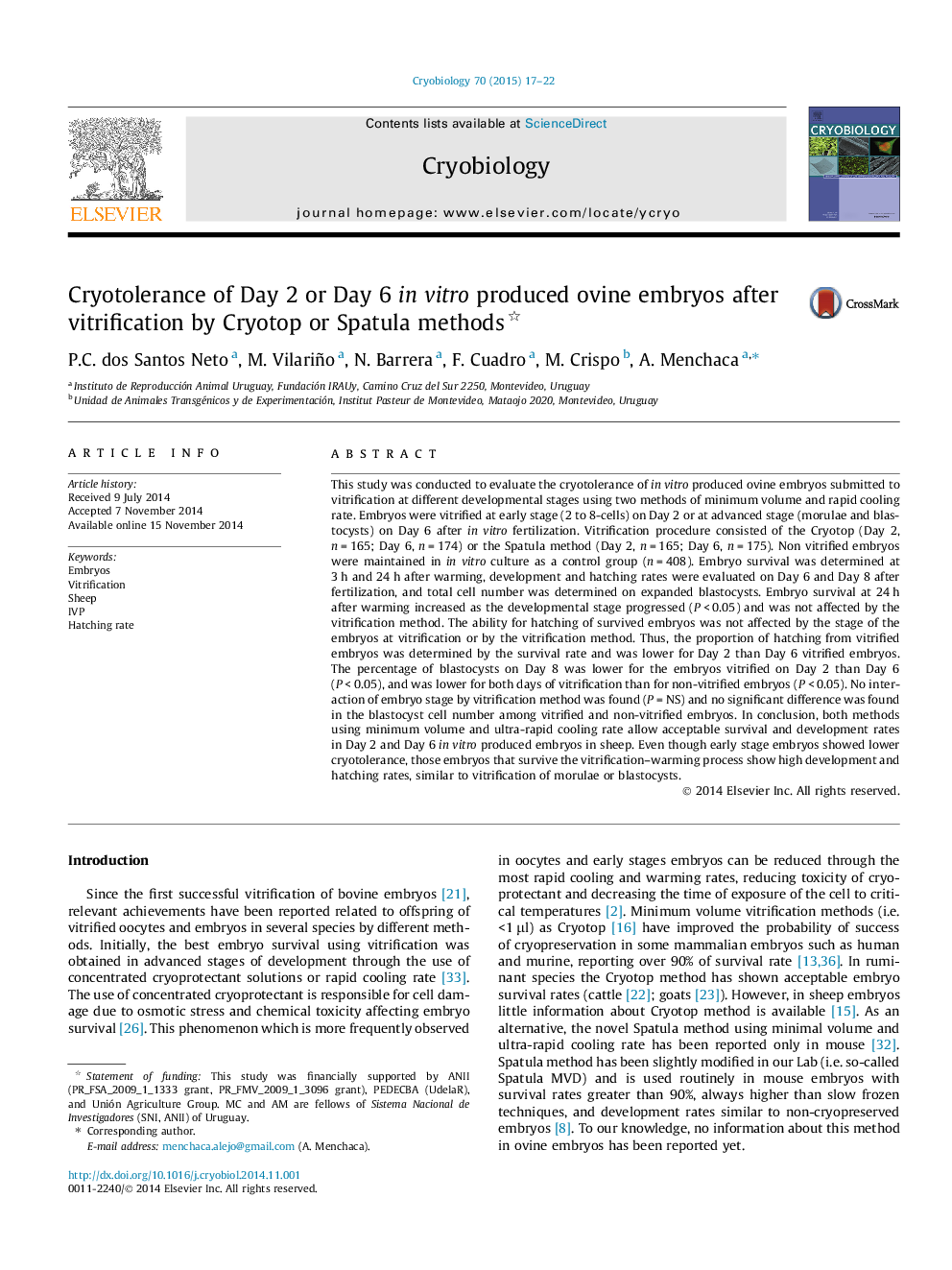| کد مقاله | کد نشریه | سال انتشار | مقاله انگلیسی | نسخه تمام متن |
|---|---|---|---|---|
| 2168388 | 1092887 | 2015 | 6 صفحه PDF | دانلود رایگان |
This study was conducted to evaluate the cryotolerance of in vitro produced ovine embryos submitted to vitrification at different developmental stages using two methods of minimum volume and rapid cooling rate. Embryos were vitrified at early stage (2 to 8-cells) on Day 2 or at advanced stage (morulae and blastocysts) on Day 6 after in vitro fertilization. Vitrification procedure consisted of the Cryotop (Day 2, n = 165; Day 6, n = 174) or the Spatula method (Day 2, n = 165; Day 6, n = 175). Non vitrified embryos were maintained in in vitro culture as a control group (n = 408). Embryo survival was determined at 3 h and 24 h after warming, development and hatching rates were evaluated on Day 6 and Day 8 after fertilization, and total cell number was determined on expanded blastocysts. Embryo survival at 24 h after warming increased as the developmental stage progressed (P < 0.05) and was not affected by the vitrification method. The ability for hatching of survived embryos was not affected by the stage of the embryos at vitrification or by the vitrification method. Thus, the proportion of hatching from vitrified embryos was determined by the survival rate and was lower for Day 2 than Day 6 vitrified embryos. The percentage of blastocysts on Day 8 was lower for the embryos vitrified on Day 2 than Day 6 (P < 0.05), and was lower for both days of vitrification than for non-vitrified embryos (P < 0.05). No interaction of embryo stage by vitrification method was found (P = NS) and no significant difference was found in the blastocyst cell number among vitrified and non-vitrified embryos. In conclusion, both methods using minimum volume and ultra-rapid cooling rate allow acceptable survival and development rates in Day 2 and Day 6 in vitro produced embryos in sheep. Even though early stage embryos showed lower cryotolerance, those embryos that survive the vitrification–warming process show high development and hatching rates, similar to vitrification of morulae or blastocysts.
Journal: Cryobiology - Volume 70, Issue 1, February 2015, Pages 17–22
